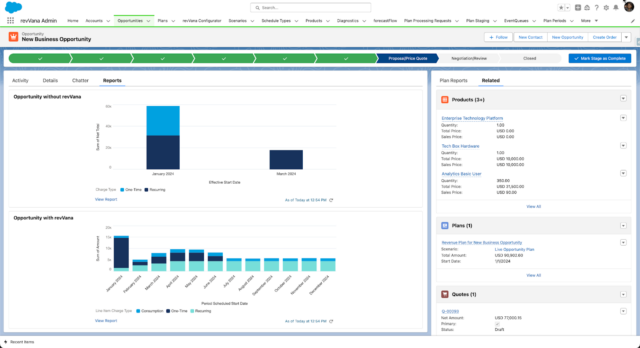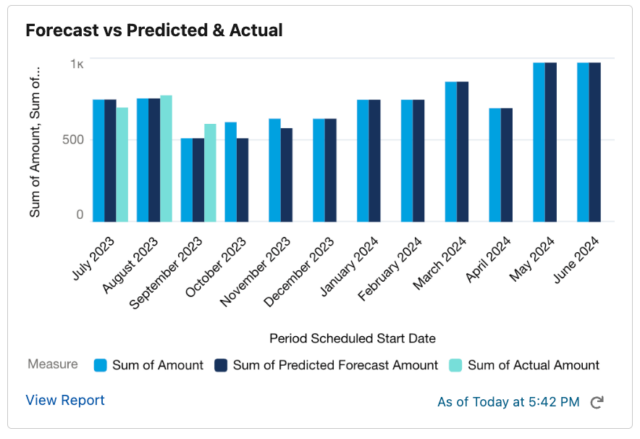

Revenue Forecasting Models: How to Choose the Best for Your Business
Revenue forecasting involves estimating a company’s future revenue using historical data, predictive models, and qualitative insights. But which model should you use?

Last updated on Monday, June 10, 2024
Data chaos—it’s the looming challenge most advertising executives face daily. As Directors and Vice Presidents of Revenue or Sales Operations (RevOps), the integration of accurate, timely, and actionable data isn’t just a portion of your role; it defines the success of your organization. But how do you transform overwhelming data streams into coherent, reliable revenue forecasts and operations insights?
In this post, you’ll discover:
Approaching data aggregation can seem daunting, but with the right strategies, it’s manageable and highly rewarding. Start by consolidating your data sources to minimize inconsistencies. It’s crucial to automate the collection and integration of data from various channels, ensuring real-time updates and reducing manual errors. Utilizing tools that automatically sync and clean data ensures that your Salesforce remains pristine and reliable.
It’s helpful to keep as much data as possible inside of Salesforce. Keeping your data within ensures it is always up-to-date and will reduce lag time. Instead of exporting data into numerous spreadsheets, it’s valuable to find methods or tools to perform the same functions as Excel inside of Salesforce. Tools like revVana can assist with revenue forecasting.
As a cornerstone of many operations, Salesforce’s potential for effective data management is immense—but only if the data quality is maintained. Regular audits and cleansing cycles are necessary to maintain integrity. Employ validation rules, duplicate management tools, and schedule periodic reviews to keep your Salesforce data useful and accurate.
It’s also valuable to get as much of your team working inside of Salesforce as possible. Having cross-departmental insights will ensure a single source of truth. This holistic view will provide you with real-time, actionable insights when it comes to decision making.

Improving revenue forecast accuracy starts with data quality but requires more nuanced strategies. Utilizing predictive analytics tools can help forecast future trends based on historical data. This forward-looking approach, coupled with real-time data feeds, ensures that your forecasts reflect the most current market dynamics. Also, cross-functional teams should be involved to provide insights, help refine forecasts, and align them more closely with operational realities and market conditions.
Your data aggregation process must be scalable, flexible, and compatible with existing systems. When implementing new solutions, prioritize those that offer easy integration with your current infrastructure. Cloud-based platforms can offer scalability and accessibility, ensuring that growing data volumes are manageable and that your team can access insights from anywhere, any time.
Lastly, linking data aggregation tightly with campaign performance monitoring enhances the capability to track real-time effectiveness and make adjustments on the fly. Align your data aggregation tactics with KPI monitoring tools (Such as Salesforce) to see direct correlations between operational adjustments and revenue impacts.
By adopting these strategies, you’re not just combating data chaos; you’re turning it into a structured asset that drives better business outcomes.

What if my current system seems to manage well enough?
Even if your current system manages adequately, incremental improvements in data processing and forecast accuracy can lead to significant competitive advantages and revenue gains.
How can I justify the investment in enhancing our data aggregation capabilities?
Highlight the potential for improved accuracy in revenue forecasts and the reduced risk of decision-making based on poor-quality data. This can translate into cost savings and increased revenues that far outweigh initial investments.
Are there risks to automating too much of the data aggregation process?
While automation reduces errors and saves time, it’s vital to maintain oversight. Regularly review automated processes to ensure they align with evolving business needs and market conditions.
How can we handle resistance moving away from spreadsheets and manual processes?
Start by demonstrating the benefits of the new system with pilot programs and training sessions to ease the transition. Show how automation can free up time for strategic tasks rather than routine data entry.
It also helps to partner with an expert in the space to ensure a smooth transition. If you’re interested in streamlining your forecasting processes, contact revVana to learn how we can help.
By tackling data chaos head-on, you not only streamline your operations but also empower your business with clarity and confidence in your financial and operational strategies. Remember, every piece of data holds the potential to unlock new opportunities for revenue and growth—it’s just a matter of aggregating and interpreting it efficiently.